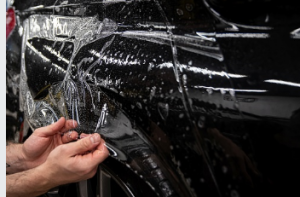Several techniques are available to protect the finish of your car. Some of these techniques include waxing, Teflon coating, and Ceramic coating. Plastic film is another option. These techniques are a good choice for protecting the paint finish on your car. They do not alter the look of the paint but instead protect it for up to a year.
Waxing
 Waxing is one of the oldest car paint protection techniques Adelaide. It dates back to the early 1800s when it was still used to protect the paint of horse carriages. However, it wasn’t until nearly a century later that cars were mass-produced, and car paint protection techniques became more widely available.
Waxing is one of the oldest car paint protection techniques Adelaide. It dates back to the early 1800s when it was still used to protect the paint of horse carriages. However, it wasn’t until nearly a century later that cars were mass-produced, and car paint protection techniques became more widely available.
Waxing has many benefits, including its low cost and ease of use. Plus, it gives your car a really shiny surface finish. While car wax does not provide the same level of protection as paint sealants, you can maintain your car’s finish for a long time by polishing it regularly. Here are some of the benefits of waxing your car: waxing your car is cheap, provides a super glassy finish, and is easy to apply.
When you wax your car, you should use a clean cloth to apply wax to your car. You want to add only a little wax to your car as it can damage the paint. Instead, use a soft cloth and ensure it’s clean before waxing. You should only use a thin layer of wax, a half-inch at maximum.
Ceramic coating
A ceramic coating protects the paint of a car from environmental factors. It helps prevent the car from being stained by water, mud, and bird droppings. Water contains mineral deposits and calcium that cause stains over time. Keeping a car dry takes work, especially during rainy seasons. A ceramic coating repels water molecules, allowing you to avoid the hassle of washing your car after a rainstorm.
This coating is expensive, but it will protect your car for a long time. It is a good idea to research the product and the costs before deciding. While it is best to use a professional, ceramic coating does require a reasonable amount of skill. The process involves several steps, including a thorough wash, chemical decontamination, polishing, and drying.
A ceramic coating can protect your car from the harmful effects of UV rays, which can damage the paint on your car. Also, it can prevent the oxidation of your car’s paint from exposure to sunlight. A ceramic coating bonds with the clearcoat of your car, acting as a sacrificial layer. Ceramic coatings last for years, making them the ideal choice for people who want to avoid reapplying their paint.
Plastic film
Plastic film for car paint protection techniques Adelaide is designed to protect the paint on your car from damage caused by sun rays. It can be applied to your car’s hood, front fenders, bumper, rocker panels, and other high-impact areas. A professional installer will install the film on these surfaces for you. It takes about two weeks for the film to be fully effective. It must be installed properly, or the film can peel off or turn yellow with time.
Most installers use templates to ensure that the film fits perfectly. The bodywork is prepared and cleaned before the film is applied. The installer will then apply the film by hand, using water and slip solution to slide the film into position. Once it is in position, the film will be squeezed to remove any excess liquid. Some companies wrap the film around the entire panel, while others leave it flush with the edge.
The film is made from a polymer called urethane. This substance is lightweight, transparent, and amazingly resistant to abrasion and impact. Another benefit of urethane is its flexibility. Despite being flexible, it will regain its shape after stretching and still resist abrasion.
Conclusion
Car owners love shiny and fresh-painted cars. Car paint protection techniques will help you retain that look and maintain the value of your car. It will cost a bit of time and money, but it will help you preserve its value. It will also make your car look better and last longer.
